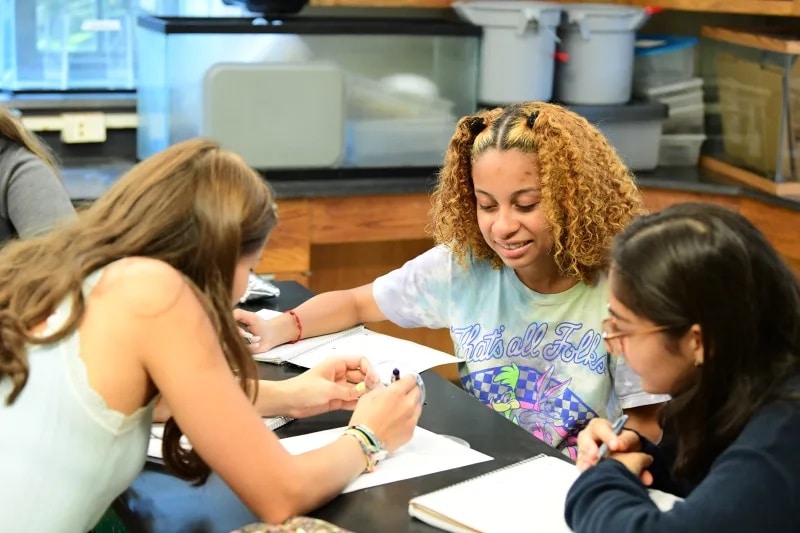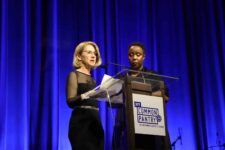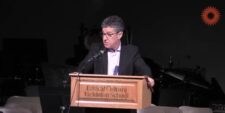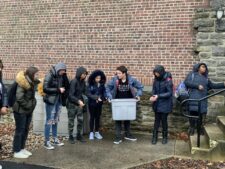Students in Katherine Kartheiser’s 9th Grade Biology class were assigned a simple comparison of two sets of data: One was the page in their textbook covering endosymbiotic theory (how structures within a cell evolved); the other was the spread on Darwin’s theory of evolution. The differences were clear. When explaining the theory of evolution, the text not only referred to Darwin by name, but also included a brief history of his life: where he lived, for example, and personal details like what he enjoyed reading. When learning about endosymbiotic theory, the students would have no way of knowing that the person who pioneered this new way of looking at evolutionary history was a woman named Lynn Margulis.
“It’s common for the names of scientists to not always accompany the discovery,” explains Kartheiser, Fieldston Upper Science Teacher. But she sees a clear reason to change this practice: To encourage inclusivity, we must celebrate the marginalized voices who have helped create modern science. “There are a few cases where everyone knows the thing, but we don’t know that it was discovered by a woman. I think it’s key to put that in the narrative,” she says.
By calling out women’s contributions to science, Kartheiser and her students hope to highlight the real and major contributions of women in a field that often centers male achievement, which, in a self-fulfilling cycle, discourages women from pursuing science. “Our implicit bias causes our brains to think if no one is explicitly named, then the scientist must be male,” explains Jenna W. ’23. To tackle this issue, the students approached the task as scientists, prepared to be meticulous in their work and objective in their conclusions.
The first step for the students was to research their own textbook, collecting data on the number of times the text includes the name of a scientist (about 30) and the number of times the scientist is a woman (three).
After collecting the data from their textbook and presenting their findings, the students each wrote their own revision of the endosymbiotic theory section of the textbook, one that highlighted the barrier-breaking achievements of Lynn Margulis while explaining the theory she discovered in detail.
Our implicit bias causes our brains to think if no one is explicitly named, then the scientist must be male.
The assignment was eye-opening in more ways than one. One day in class, as students were comparing and contrasting sections in the textbook discussing endosymbiotic theory and evolutionary theory, Kartheiser wrote the names Lynn and Darwin on the board. One of her students raised her hand and pointed out the issue of using the first name for the female scientist and the last name for the male — how Darwin appeared to have more authority because he was referred to by his last name — which Kartheiser wasn’t aware she was doing. The class used this moment to discuss how the lack of women in the textbook is most likely not due to any malicious intent, but rather due to implicit bias. “In a classroom talking about sexism in science, it’s still possible to falter,” says Kartheiser.
Once complete, the revised texts were compiled and sent to the author of this section of the textbook, Eric J. Simon. The students accompanied their work with a letter to the author explaining why these changes were important and meaningful. As Jenna wrote: “The words in these textbooks are reaching thousands of people, which represents thousands of opportunities to combat stereotypes about women in science that are so ingrained in our heads.” The set of textbooks used by 9th Grade biology students is the most-read in the world.
In February, the students received a response from Simon, who told them: “In my nearly 20 years as an author, I can say with confidence that your correspondence was the most thoughtful and articulate of any I have received.” He championed their efforts to update the text with a lens for inclusivity, saying that “scientists would like to imagine themselves as fully objective, above the frays and whims of other fields of study. Although most scientists do aspire to this ideal, history has shown that considerable progress remains unrealized.” He also told the students he was impressed by their specific analysis of the text and would strive to better represent Lynn Margulis going forward.
The conversation between the students and Simon did not end with the letter: After Spring Recess, students spent their class time in a video call with Simon, where they discussed the future of science textbook publishing and ways the industry can be more inclusive. Students asked Simon questions such as, “Do conversations about the representation of underrepresented groups take place when you think about publishing a new edition?” Students wanted to know how the decision is made to list certain scientists by name, and how they make textbooks engaging for students.
In both his letter and the video call with students, Simon explained how he is doing the work of making science texts more inclusive, and he demonstrated for the students a willingness to learn and continue learning even as an expert in his field. He provided several examples where he made changes to the textbook to be more inclusive either because he noticed something himself or because someone provided him with feedback.
“For our class, it is easy to assume that the textbook contains all of the facts about biology, and that there is no bias present within the source,” says Francesca G. ’23. “This assignment certainly showed me the importance of critical thinking, acknowledging that no source is perfect, but most critically that my voice can and should be heard.”
Students at the Ethical Culture Fieldston School are always encouraged to ask questions — it speaks to the core of what School founder Felix Adler meant when he said “education must change with the change of the world.” 9th Grade biology students were encouraged to think critically about the world around them, including the materials they use to help them understand the world. They engaged with the text — asking critical questions about inclusivity and representation — and, in the end, were able to spark change.



